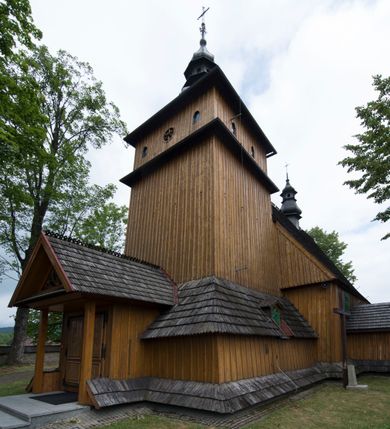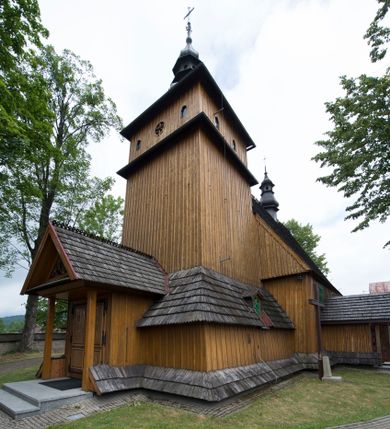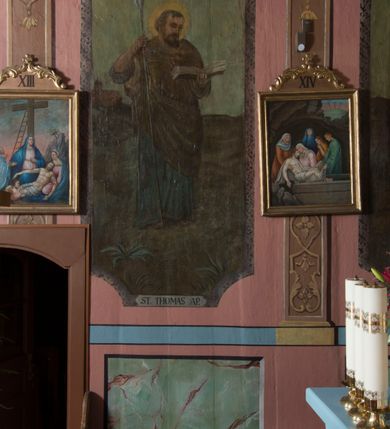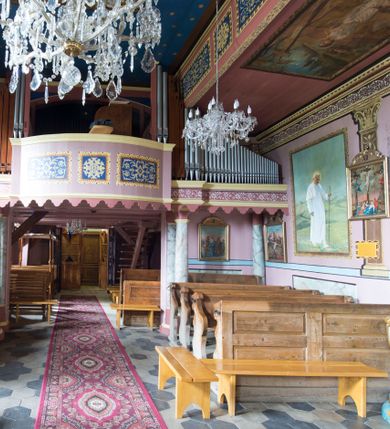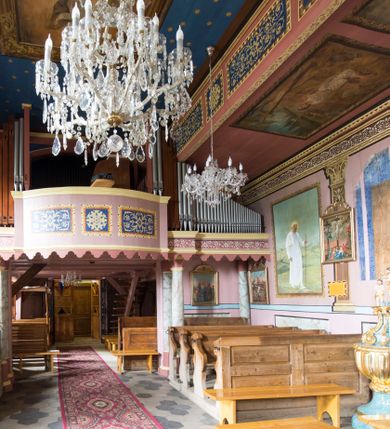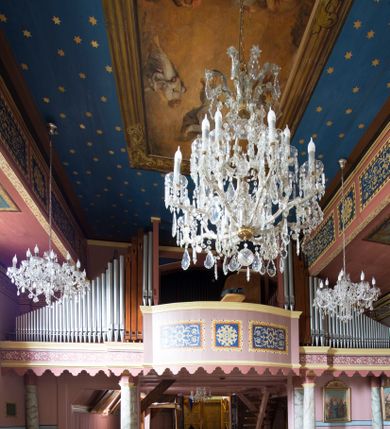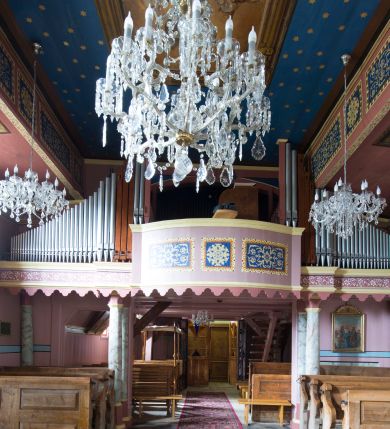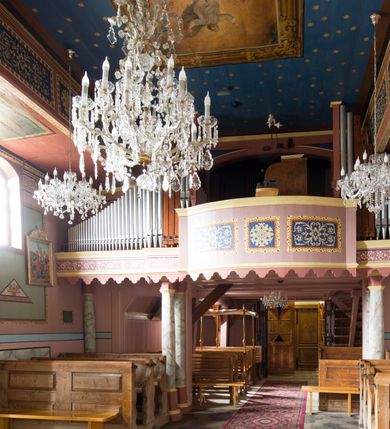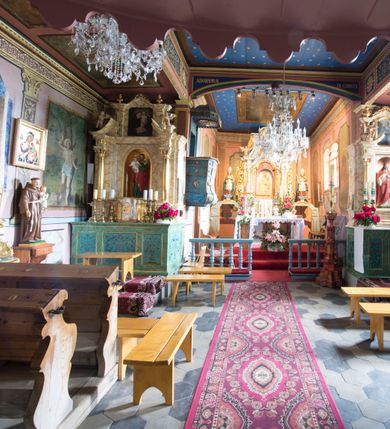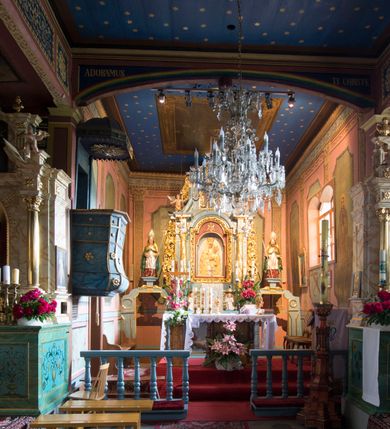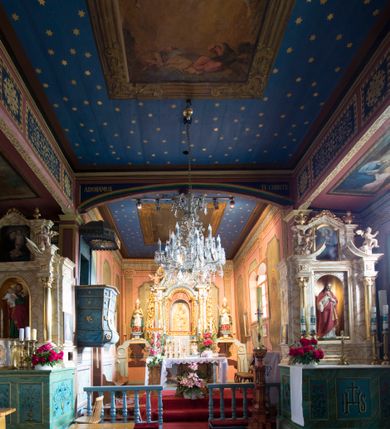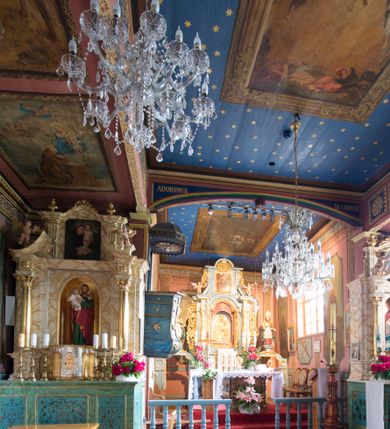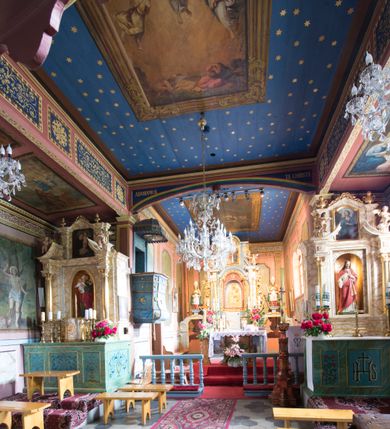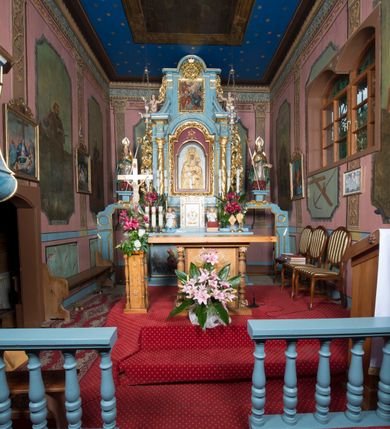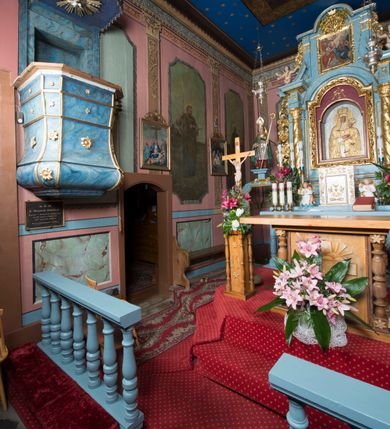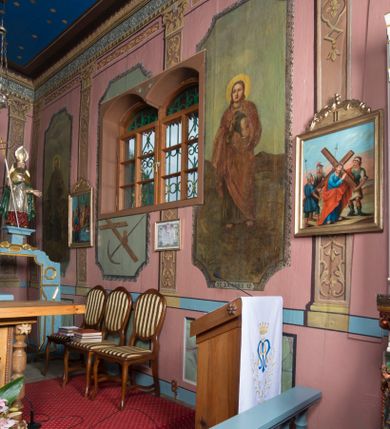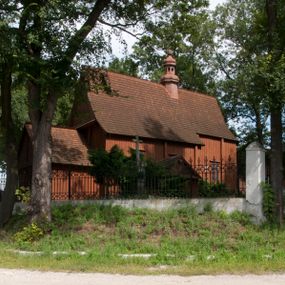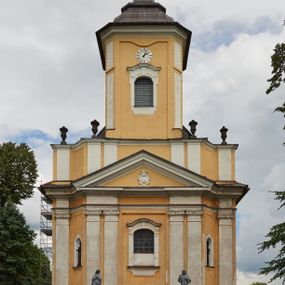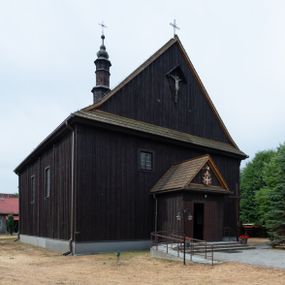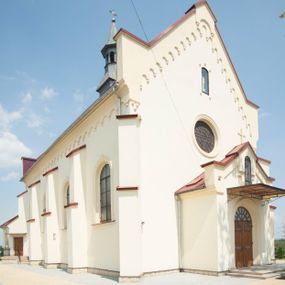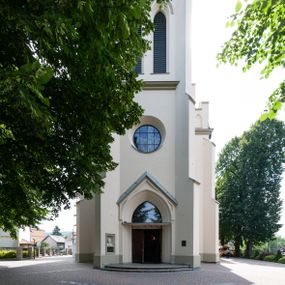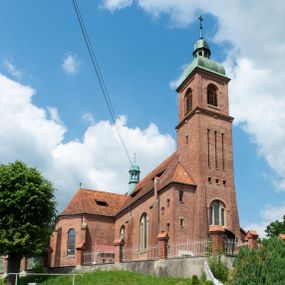
Saint Adalbert church in Krzeczów
Place
Krzeczów
Parish
St. Adalbert's of Prague parish in Krzeczów
Identifier
DZIELO/22041
Amount
1
Catalogue note author
Paulina Chełmecka
History of work
The history of the church in Krzeczów is related to the history of the parish in nearby Łętownia, which was founded on November 10, 1492 by the Bishop of Cracow Fryderyk Jagiellończyk thanks to the foundation of Spytek Jordan Melsztyński. At the end of the 16th or at the turn of the 16th and 17th centuries a parish temple was erected in the town dedicated to St. Adalbert. This wooden church was consecrated on May 29, 1675 by the suffragan bishop of Cracow, Mikołaj Oborski. In the mid-eighteenth century, along with the development of the parish, it was necessary to erect a larger temple in its place. It was then decided to move the aged church to Krzeczów, a few kilometers away, which, together with the towns of Krzczonów and Tenczyn, belonged to the parish in Lubień.
According to local tradition, the entire undertaking was carried out thanks to the generosity of two seamstresses, sisters unknown by their names - Jadwiga and Małgorzata, who lived with the weaver mother in the village area, where the buildings of the Sisters Servants are now located. They bought an old church in Łętownia, and a part of the payment for the purchased temple they repaid with their work to the local parish. The founders were supposed to be buried "in the nave, where two flat stone slabs are laid next to each other." However, during the renovation of the church's filling, around 1910, no trace of burials was found.
The church and its equipment were moved to Krzeczów in 1760, while the assembly was completed five years later. In 1793 a tower was added to it. According to tradition, the move took only one and a half days, thanks to the help of peasants from around Myślenice. As a reward, the Bishop of Kraków, Ignacy Sołtyk, indulged everyone involved. The location of the church within Krzeczów is associated with a legend according to which the temple was founded in a place where the inhabitants of the village "were to see during the dark night, and at some seasons, some extraordinary heavenly phenomena and night lights." Initially, a statue of the Lord's Passion was erected between these thorns, [...] however, the lights did not cease to appear. The phenomena were to cease when the church from Łętownia stood there.
The aforementioned sisters, who bought the church, did not leave funds for its maintenance, which is why the building remained neglected and unfinished in the first years, as evidenced by the unshored interior walls. The duty to care for the temple belonged to the commune. In 1850, the church and the gilding of the high altar were repainted with these funds and with small donations of the local population. In 1857, the tower was shored and cupola crowning it was covered with metal. At the same time it was a relatively difficult period for the church in Keczów, as for unknown reasons it was not accepted by parish priest from Lubnia. "God allows crosses and suffering. The Lord's Cross also came to the church in Krzeczów, which is described by reliable church files. Well, parish priest of then, priest from Lubnia, he was not attached to the church in Krzeczów, he deemed it too improper and with his stubborness introduced impassable difficulty in various things, although people had special attachment to this church. [...] Father [...] his aversion to the church in Krzeczów escalated to such an extent that he even wished to abolish it. " The gradually improving situation changed dramatically when the temple was taken over by the parochial vicar Adam Rąpała (from 1904 to 1933), who became the first parish priest of the newly created parish. The priest also was taking care of the material affairs of the local temple, improving both its appearance and functionality. ordering among others shoring of the sacristy walls, which was done by carpenter Stanisław Szyszka. In 1907, in the room above the sacristy, called the vault, a new wall was made and the window was secured with an iron grille.
On June 27, 1909, a decision was made by the Parish Committee with priest Adam Rąpała to renovate the church from the donations made by parishioner Anna Burtanka. These works were carried out by Walenty Kaleciński from Lubnia, his brother Józef and son Ludwik, who was a student of the School of Fine Arts in Krakow. Polychrome of the interior walls with oil paints was made then, showing Christological scenes and images of saints.
Father Rąpała also commissioned Zacchaeus crosses to which he bought candlesticks. Then, on July 13-17, 1909, a foreman from Cracow Andrzej Guzikowski from Kleparz laid a floor made of cement tiles imported from Cracow. These works are commemorated with the inscription above the door: "Renovato Ecclesia A(nno) D(omini) 1909."
In 1931, Jan Szypuła and Stanisław Swałtek made new, larger windows in the church. For this purpose, Father Rąpała donated three firs from priest's forests. The dark interior of the church was illuminated during the ministry of the parish priest Leopold Bukowski (in Krzeczów from 1935, he died in 1943) by making a second window in the chancel.
During the times of another extremely energetic parish host, which was priest Władysław Krzyszkowiak (in Krzeczów in 1946-1949), several works important for the church's architecture were carried out, including renovation of the roof on the church. In the years 1958-1959 the church underwent further changes - the altar wall was rebuilt and the chancel was extended. In 1969, the temple was entered into the register of monuments. Currently, it is also part of the Wooden Architecture Trail in Małopolska.
The subsequent works on the church was carried out by priest Tadeusz Siwiec (in Krzeczów in 1957-1963), who ordered the reconstruction of the church part under the tower and made an electrical installation for the church and chancel. The next parish priest, Father Stanisław Waluś (in Krzeczów in 1968-1989) replaced the church roof covering and made a new electrical installation. In May 1970, conservation work began on the polychrome, which was made by the painter Karol Pustelnik from Wadowice. During this period, the decorative elements of the pulpit were gilded, which is the work of Edward Tomczyk.
After 1989, further renovation works were carried out on the church, including replacement of decayed beams and the formwork of the north wall of the church and the church tower, which was covered with copper sheet, were replaced. The church fence was also rebuilt, new doors were made, the walls were heat insulated and the walls inside and outside were renovated. The church was heated, and the foundations were renovated and insulated. The vestibule was also renovated by performing levelling, insulation and floor made of larch boards and a new shoring on the walls. The church also replaced the windows with new larch.
Abstract
The church in Krzeczów is an interesting example of both wooden architecture from the turn of the 16th and 17th century, and a structure which underwent translocation in the 18th century.
Other works from this place
Similar works
By title
By category
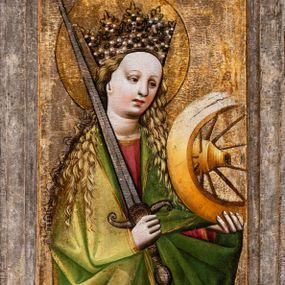
A front left wing of the old triptych of Our Lady of the Immaculate Conception
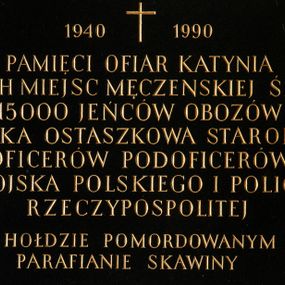
A plaque commemorating the victims of extermination
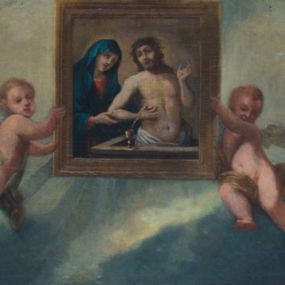
Adoration of painting "Misericordia Domini" by the Polish saints
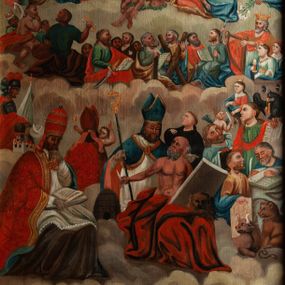
Adoration of the Holy Trinity by the all saints
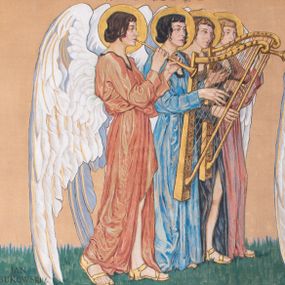
Adoring angels
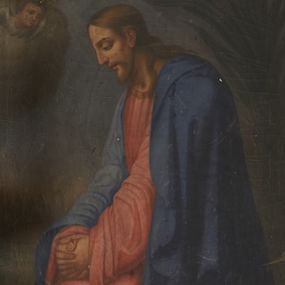
Agony in the Garden of Gethsemane
How to cite?
Paulina Chełmecka, "Saint Adalbert church in Krzeczów", [in:] "The Sacred Lesser Poland Heritage", 2026, source: https://sdm.upjp2.edu.pl/en/works/saint-adalbert-church-in-krzeczow
